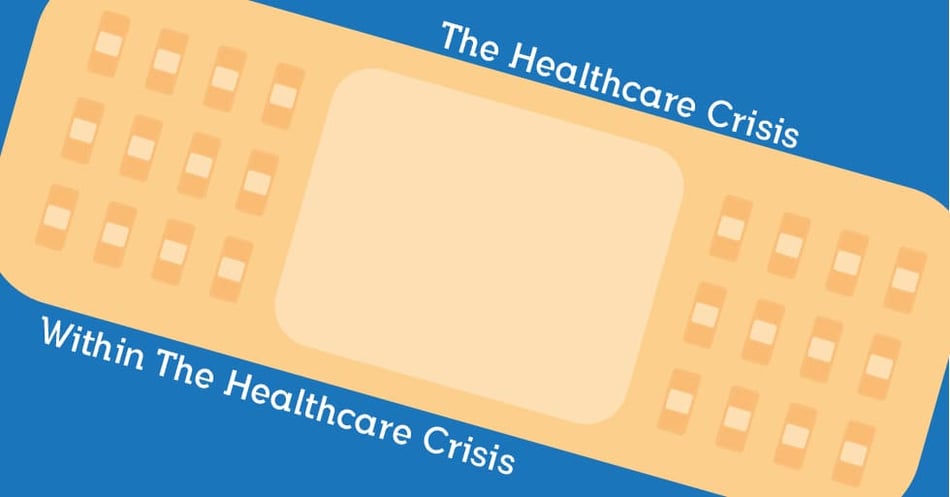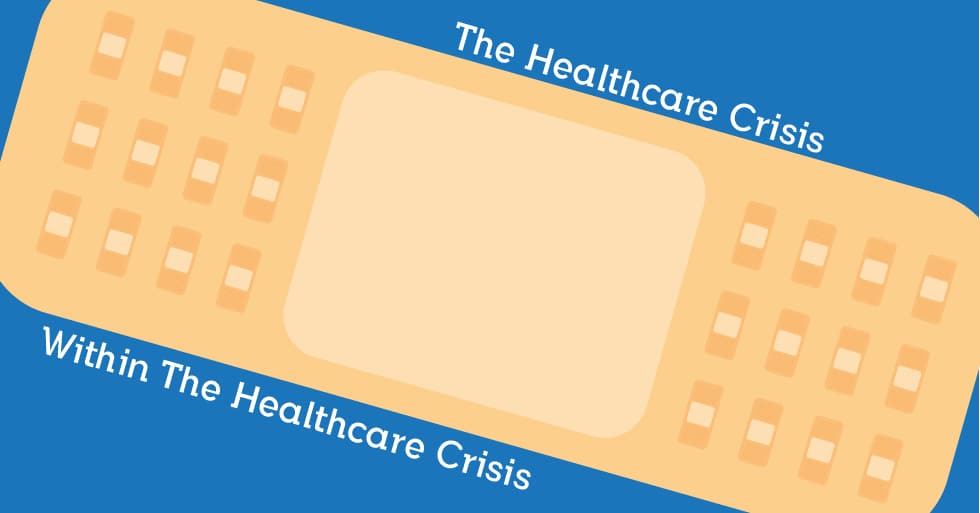The Health Crisis Within the Health Crisis

 It's hard to quantify the impact the coronavirus pandemic has had on healthcare. We can list numbers of lives lost, ventilators used, masks needed, or swabs ordered. But outside the crisis caused directly by the spread of COVID-19, there is a ripple effect on other aspects of healthcare. In today's post, we'll look at the health crisis within the health crisis - the issues leading to additional strain on our health care system and our patient populations.
It's hard to quantify the impact the coronavirus pandemic has had on healthcare. We can list numbers of lives lost, ventilators used, masks needed, or swabs ordered. But outside the crisis caused directly by the spread of COVID-19, there is a ripple effect on other aspects of healthcare. In today's post, we'll look at the health crisis within the health crisis - the issues leading to additional strain on our health care system and our patient populations.
1. Hospital Revenues
The country's healthcare system is experiencing simultaneous pressures on two fronts. First, the preparation and implementation of treatment plans for patients with COVID-19, including mobile testing, patient treatment areas and supplies, staff training, and community support services. But alongside these life-saving measures, hospitals are also facing tremendous financial pressures as they manage operations without the steady influx of elective procedures. Nationwide, hospitals have seen about a 50% reduction in unique patient visits, and health spending has decreased 18% since January. Of the total losses - estimated at about $200 billion - a full $160 billion is from elective procedures alone. This loss of financial income has led to seemingly counter-intuitive furloughing of medical staff during a medical crisis, as hospitals try to save supplies, space, and money for dealing with COVID-19.
2. Health Insurance
What happens when 30 million Americans lose their jobs, even temporarily? It means almost 30 million Americans have also just lost their health insurance. In the US, almost 60% of adults under 65 rely on their employers for health insurance (those over 65 receive Medicare, 30% pay for their own, and over 10% are uninsured). When those jobs disappeared, those individuals lost their health care coverage. What options do those individuals have? While COBRA enables employees to pay for their own coverage for a time after losing their job, the premiums are typically very high for an individual. So what choices do these Americans have? Depending on the state they are from, they may be eligible under the expansion of Medicaid, while about 33% will be able to receive coverage under the Affordable Care Act (Obamacare) if they apply during the 60-day window. About 20% will have no options because their state did not expand Medicaid (check your state here). When individuals do not have health insurance, they avoid or postpone health treatment, resulting in serious complications or even death. If left unaddressed, the impact of this many people losing health insurance will have an impact on our society for years to come.
3. Drug Scarcity
We have all heard about the pressures to produce, acquire, and dispense personal protective equipment (PPE), ventilators, swabs and testing materials as a result of COVID-19. But in addition to the pressure to secure these important items, there has also been enormous pressures on the supply chain for pharmaceutical products. When hydroxychloroquine and chloroquine were making headlines, these two drugs, necessary for treatment of rheumatoid arthritis and lupus, because scarce overnight, making it difficult to fill pre-existing prescriptions for the drugs. As Remdesivir seems to help alleviate some aspects of COVID-19, it, too, began experiencing shortages, with doses rationed out to hotspots and hospitals with greatest need. And these are not the only drugs impacted during the pandemic. Due to the increased use of ventilators, medications used to sedate and comfort patients while intubated are scarce, as are the antibiotics used to treat (or prevent) infections resulting from ventilators. Inhalers, IV drugs, blood pressure medication and drugs used to prevent blood clotting are also in high demand, with the supply chain struggling to keep up. And because COVID-19 is a pandemic affecting every country, the international partnerships essential to drug production have been disrupted.
4. Chronic Conditions
Individuals with chronic conditions, including those on dialysis, receiving chemotherapy and involved in clinical trials, have experienced interruptions as well. While some vulnerable patients are receiving dialysis treatments at their home, many others continue to receive treatments at dialysis centers, putting themselves and staff at risk for virus transmission.Some chemotherapy treatments have been put on hold, since these treatments make the patient's immune system weaker and less capable of fighting off a potential exposure to the coronavirus. Patients awaiting organ transplants who are not in immediate risk have also been put on hold.
5. Mental Health
Another field of treatment experiencing disruption is mental health treatment, including addiction services. Inpatient treatment facilities have experiences outbreaks, and the already limited beds in psychiatric care have been even more limited. Millions of patients receiving outpatient therapy, from individual counseling to addiction recovery services, are having to rely on telehealth video conferences or alternative treatments during this time of social distancing. Guidelines and regulations related to video and telephone counseling and privacy had to be rewritten to accommodate the need for alternative sessions, with some federal funding assistance helping practices set up remote treatment options. Addiction treatment centers, including those treating patients with opioid use disorders, have had to implement innovative practices, such as involving family members, in order to keep their clients safe.
These are just the major areas of healthcare being impacted indirectly by the COVID-19 pandemic. The ripple effect of such a tremendous disruption to our lives is not surprising, which means that many of these issues should be anticipated and measures should be taken to prepare for them. With the potential for a second wave of infection in the fall, we should all be working towards setting the stage for a less disruptive impact on health care and our nation.
![EOScu Logo - Dark - Outlined [07182023]-01](https://blog.eoscu.com/hubfs/Eoscu_June2024/Images/EOScu%20Logo%20-%20Dark%20-%20Outlined%20%5B07182023%5D-01.svg)




